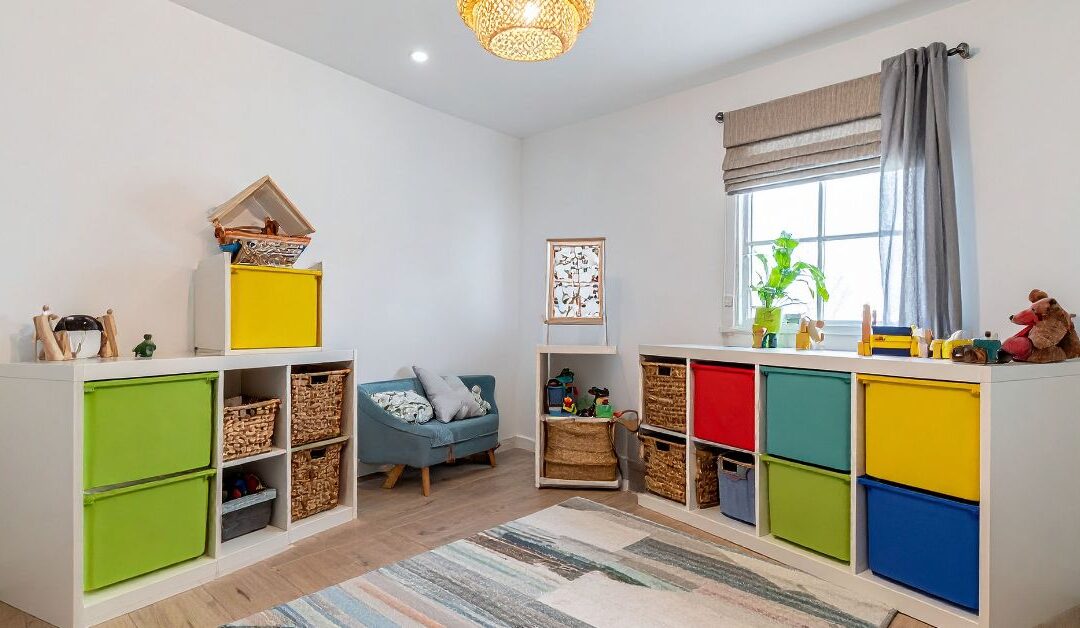If you’ve ever stepped on a rogue building block or tripped over a pile of stuffed animals, you know the chaos a child’s playroom can create. Between educational toys, pretend play sets, and endless art supplies, it can feel like keeping things tidy is an impossible task.
The good news? With a few smart strategies and the right products, you can transform even the messiest playroom into a space that’s both organized and enjoyable. In this article, we’ll tackle one of the biggest parenting challenges—playroom clutter—and show you how to solve it without compromising on fun, creativity, or décor.
The Problem: Playroom Overload
Children’s playrooms are meant to spark imagination—but when every surface is covered in toys, books, and art projects, it’s hard for kids to focus, play, or even know what to do next.
The issue isn’t just about appearance; a cluttered space can actually limit creativity and cause stress for both children and parents. Kids can’t enjoy their toys if they’re buried in piles, and parents end up spending more time cleaning than connecting.
Common culprits include:
- Too many toys in one space
- Lack of proper storage solutions
- Poor layout or unplanned décor
- Toys that don’t match your child’s current stage
The Solution: Smart Storage + Thoughtful Curation
The secret to an organized playroom isn’t constant cleaning—it’s creating a system that works for both kids and parents. Let’s break down a few proven strategies that can bring balance back to your play space.
Step 1: Declutter and Categorize by Play Type
Start by sorting your child’s toys into simple categories:
- Educational Toys (puzzles, STEM kits, books & learning materials)
- Pretend Play & Role Play (dolls, costumes, kitchen sets)
- Building & Construction Toys (blocks, magnetic tiles)
- Baby & Toddler Toys (rattles, sensory sets)
Once you’ve sorted, store each group in labeled bins or baskets. Kids can easily recognize where things belong, and clean-up becomes a natural part of playtime.
Pro tip: Rotate toys every few weeks. Keeping some items stored away makes “old” toys feel new again—and prevents overwhelming your child with too many options.
Step 2: Invest in Functional Furniture & Storage
A great organization starts with great furniture. Choose multi-purpose storage solutions that make cleanup quick and simple.
At Baby to Kids Store, you’ll find smart furniture & storage pieces designed specifically for kids’ rooms. Think:
- Open shelving for easy access to favorite toys
- Stackable storage bins for small pieces like blocks or puzzles
- Child-safe cabinets to tuck away messier items like paints or games
Look for pieces that blend well with your bedding & room décor. Light woods, soft neutrals, and pastel tones help maintain a cohesive look—so even when toys are visible, your space still feels calm and curated.
Step 3: Design Zones for Different Activities
An organized playroom doesn’t mean minimal play—it means purposeful play. Create designated “zones” for different types of activities:
- Reading corner: Add a cozy chair, soft lighting, and a few books & learning materials.
- Creative zone: Use washable mats and small tables for art and craft time.
- Active play area: Keep space open for pretend play, dancing, or building forts.
By giving each type of play a home, kids learn where to go for each activity—and where to return items afterward.
Step 4: Choose Toys That Encourage Focused Play
Fewer, more meaningful toys lead to deeper engagement. Instead of an overflowing room, curate a selection of toys that encourage creativity and skill-building.
For instance, building & construction toys foster problem-solving, while pretend play & role play help develop social skills. Rotating educational toys every few weeks keeps playtime exciting and focused.
This intentional approach not only reduces clutter but also enhances your child’s developmental growth.
Step 5: Keep Décor Simple but Engaging
Finally, tie it all together with thoughtful nursery & room décor. Use wall shelves for favorite dolls or plush animals, and display books with their covers facing out—it doubles as decoration and an invitation to read.
A rug or soft play mat defines the space visually and adds comfort, while a few framed prints or wall decals give it personality. Remember: your goal isn’t perfection—it’s creating a warm, welcoming space that encourages play and learning.
Key Takeaways
- Declutter regularly: Less is more when it comes to playtime focus.
- Storage is key: Choose kid-friendly furniture and labeled bins.
- Design intentional zones: Create spaces for reading, art, and active play.
- Rotate toys often: Keeps the environment fresh and exciting.
- Blend décor and function: A tidy space can still feel playful and inspiring.
A well-organized playroom doesn’t just look better—it helps your child play better. With the right mix of educational toys, furniture & storage, and room décor, you can transform a cluttered area into a calm, creative space your child will love.
Explore more storage ideas, playroom décor, and age-appropriate toys at Baby to Kids Store, your one-stop destination for everything from building toys to pretend play sets.
If you found this guide helpful, join our newsletter to get more parenting tips and design ideas delivered straight to your inbox—and share this post with a friend who’s ready to reclaim their playroom.

